Today I just picked up a really rough set of Triad Silver Monitors. They're an MTM design with Scanspeak Revelator woofers and Seas Prestige tweeters. One of the tweeter domes is pushed in, as are all 4 dustcaps on the woofers. I'm going to take the tweeters apart to clean them and to pop the dome back out. If they're bad enough, I'll get replacement dome & voice coil assemblies. I should be able to pop out the woofer dust caps, hopefully well enough that they look OK. The one thing I'm unsure of is what glue to use to reattach the rubber surround to the Revelator cone. I want to minimize the effects on cone resonance. About 2-3" of it seems to be affected. I don't think the usual white elmers junk that usually comes with recone kits is the right stuff because that will soak into the cone and permanently alter it. I have some M-3035 adhesive that came with the rubber surround kit for some Paradigm 7SEs. Is that my best option or something else?
So, here come the pictures!
Here is the pair of speakers. Rough overall.

I quickly function checked them and all of the drivers work. I didn't do any real listening but my initial impression is that they are really weak in the lower midrange and bass. They're a small sealed design with a claimed f3 of 70hz, so I had no expectations of much bass, but I'd hoped for a lot more lower mids. I'm guessing that Triad used the same crossover as their inwall version and didn't account for baffle step losses. This would also explain their claim of 92dB sensitivity.
The tops of the enclosures are scratched and the corners are chewed up, but it's all repairable.

It looks like more of the surround separated from the cone than I thought. The tweeter is looking pretty sweet too.

The Revelators are labelled 8531K03, which turned up nothing. It looks like a stock 8531k00 with 2 bucking magnets added, presumably to raise the Qes to lower the f3 in these tiny enclosures. Speaking of which...

10lbs of **** in a 5lb box. There's bracing everywhere, ceramic plates glued to the enclosure walls, and some ceramic cylinder running vertically. I didn't look over the crossover yet, but I did see a Solen air core inductor, so I'm guessing that the rest of the components will be good quality.
So, here come the pictures!
Here is the pair of speakers. Rough overall.

I quickly function checked them and all of the drivers work. I didn't do any real listening but my initial impression is that they are really weak in the lower midrange and bass. They're a small sealed design with a claimed f3 of 70hz, so I had no expectations of much bass, but I'd hoped for a lot more lower mids. I'm guessing that Triad used the same crossover as their inwall version and didn't account for baffle step losses. This would also explain their claim of 92dB sensitivity.
The tops of the enclosures are scratched and the corners are chewed up, but it's all repairable.

It looks like more of the surround separated from the cone than I thought. The tweeter is looking pretty sweet too.

The Revelators are labelled 8531K03, which turned up nothing. It looks like a stock 8531k00 with 2 bucking magnets added, presumably to raise the Qes to lower the f3 in these tiny enclosures. Speaking of which...

10lbs of **** in a 5lb box. There's bracing everywhere, ceramic plates glued to the enclosure walls, and some ceramic cylinder running vertically. I didn't look over the crossover yet, but I did see a Solen air core inductor, so I'm guessing that the rest of the components will be good quality.
“One man’s trash, another man’s treasure”
It is painfull to look at how badly these speakers have been treated.
Good luck with the rehab.
It is painfull to look at how badly these speakers have been treated.
Good luck with the rehab.
I think I'd check to see if the midbass units could be reconed. I see creases on the main cones, and paper doesn't really recover from that.
Chris
Chris
I think I'd check to see if the midbass units could be reconed. I see creases on the main cones, and paper doesn't really recover from that.
Chris
The cones all look good to me. I didn't see any signs of damage on any of them. You're not mistaking the slits for damage are you?
I made some progress today. I gave the woofers a quick cleaning and popped the dust caps out. I used a rounded dowel rod to do the heavy lifting, then used an angled coat hanger for the precision work. They don't look great, but they're as good as they'll get. Next I need to glue up the surrounds on 2 of them, then do a more detailed cleaning. I also took the tweeters apart, popped out the dome and cleaned them both. As far as I can tell, these tweeters only differ from the standard Seas T25CF-002 in that the front face is cut to match the diameter of the woofers and the copper faceplate insert is black. The dome is still dimpled, so if it measures differently than the other one may need to nuy replacement coil/dome assemblies.
Dowel and coat hanger

Semi cleaned and dust caps popped out

Dome popped out and all cleaned up

Dowel and coat hanger

Semi cleaned and dust caps popped out

Dome popped out and all cleaned up

An excellent project, Jim! Enjoyed reading about it...

Presumably you payed very little for these old dogs. 😀
I should think the tweeters are fine despite the dents. But Madisound can supply new SEAS domes.
An idiosyncratic design with bathroom tiles (an idea tried out by Joachim Gerhard too...) and huge stuffing. Might be possible to add a reflex tube for more bass. Or a sub-woofer.
Am deeply interested in the crossover. A low bafflestep design here by Solen.ca:
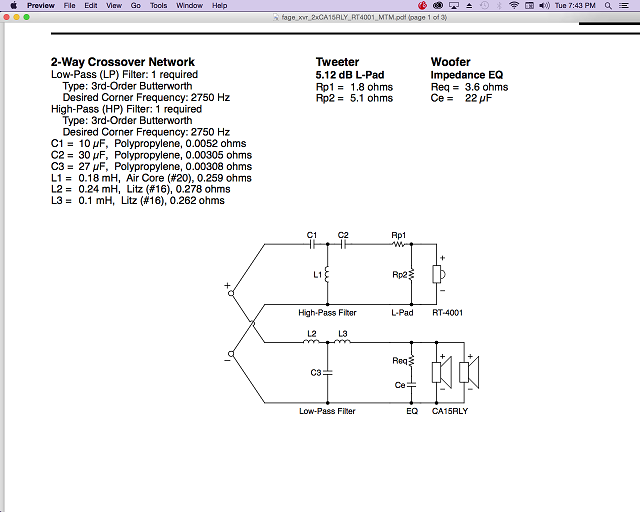
Relies on impedance correction to work.
I am always amazed that the mainstream thinks paralleling 8 ohm drivers is a good idea. Two 4 ohms in series is just plain easier IMO.

Presumably you payed very little for these old dogs. 😀
I should think the tweeters are fine despite the dents. But Madisound can supply new SEAS domes.
An idiosyncratic design with bathroom tiles (an idea tried out by Joachim Gerhard too...) and huge stuffing. Might be possible to add a reflex tube for more bass. Or a sub-woofer.
Am deeply interested in the crossover. A low bafflestep design here by Solen.ca:
Relies on impedance correction to work.
I am always amazed that the mainstream thinks paralleling 8 ohm drivers is a good idea. Two 4 ohms in series is just plain easier IMO.
Steve
You have a pretty strong stand on a series connection, I recall you stating this point earlier. Would you care to elaborate? A genuine question.
A mismatch in Fs (in woofers specially) might cause issues.?
Serial connection in midranges, yes.
Would really like to hear your thoughts.
You have a pretty strong stand on a series connection, I recall you stating this point earlier. Would you care to elaborate? A genuine question.
A mismatch in Fs (in woofers specially) might cause issues.?
Serial connection in midranges, yes.
Would really like to hear your thoughts.
yes, VERY little. I paid about 1/10 what just the tweeters would cost new, and got a set of Advent Minis in the deal too.An excellent project, Jim! Enjoyed reading about it...
Presumably you payed very little for these old dogs. 😀
there's so much crap in the enclosures that it would be impossible to fit ports anywhere, plus the internal volume is so tiny that even if I ported outside the box, the port would be of little value. Assuming that all 4 woofers measure OK, I'm inclined to keep them in the original enclosures and run them with a sub as they were originally intended.I should think the tweeters are fine despite the dents. But Madisound can supply new SEAS domes.
An idiosyncratic design with bathroom tiles (an idea tried out by Joachim Gerhard too...) and huge stuffing. Might be possible to add a reflex tube for more bass. Or a sub-woofer.
Am deeply interested in the crossover. A low bafflestep design here by Solen.ca:
Relies on impedance correction to work.
I am always amazed that the mainstream thinks paralleling 8 ohm drivers is a good idea. Two 4 ohms in series is just plain easier IMO.
I tend to prefer lower impedance designs, probably because of my car audio days. Now a lot of the new class D amp designs seem to be optimized for 4 ohm loads, so I suspect that as they continue to gain market share, you'll see more and more 4 ohm speaker designs.
The real problem with parallel MTM is you are severely constrained by low impedance.
Vifa PL14WJ-
In an ideal World, you'd use a LCR presence notch around 700Hz for the neutral sound with Scan or anybody elses 5" woofers in a regular MT. A baffle issue AFAIK. Not an option in parallel MTM. Would take impedance down to near 3 ohms. So in the above Troels sacrifices strict accuracy in the MTM version and uses a usual LC bass filter.
Further thoughts here:
Advice needed for the polarity of a 3 ways
Flat Impedance and Flat Power response design.
2.5 way crossover how it works?
THIS is how I would build a series MTTM:
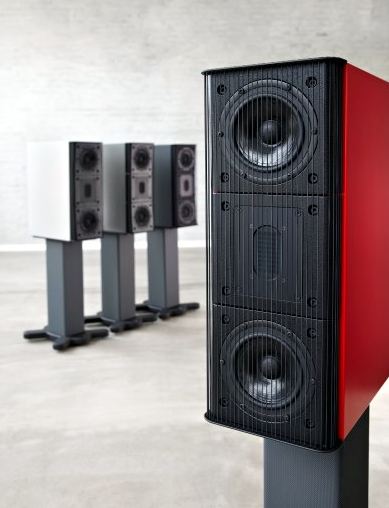
Mathematical perfection. 😎
Vifa PL14WJ-
In an ideal World, you'd use a LCR presence notch around 700Hz for the neutral sound with Scan or anybody elses 5" woofers in a regular MT. A baffle issue AFAIK. Not an option in parallel MTM. Would take impedance down to near 3 ohms. So in the above Troels sacrifices strict accuracy in the MTM version and uses a usual LC bass filter.
Further thoughts here:
Advice needed for the polarity of a 3 ways
Flat Impedance and Flat Power response design.
2.5 way crossover how it works?
THIS is how I would build a series MTTM:
Mathematical perfection. 😎
All valid points and I concur. I am all for impedance hygiene.
Some of the above issues can be avoided with a careful driver choice and baffle design though.
My question was more about (the myth?) of a possibly different Fs' in serially connected woofers. I had never used such a topology so I don't know what to make of it - I guess I'll have try it and see for myself. There was a thread here which basically concluded that it was not the best scenario (I am paraphrasing) and not for the reasons you mentioned.
Some of the above issues can be avoided with a careful driver choice and baffle design though.
My question was more about (the myth?) of a possibly different Fs' in serially connected woofers. I had never used such a topology so I don't know what to make of it - I guess I'll have try it and see for myself. There was a thread here which basically concluded that it was not the best scenario (I am paraphrasing) and not for the reasons you mentioned.
Why should minor (bass resonance) Fs mismatches in serial MTM be much different from parallel MTM? 😀
I was pretty happy with my thought experiment on two basses in a common enclosure:
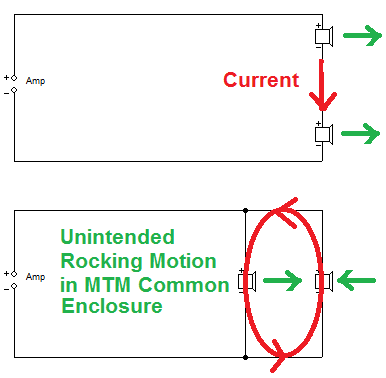
In an ideal World, it wouldn't matter how you wire it. But with a valve amplifier it would:
Ariel Speaker Page
Lynn always thought the Ariel worked better with valves. But separate enclosures. Maybe Jim is in a position to clear this up?
I was pretty happy with my thought experiment on two basses in a common enclosure:
In an ideal World, it wouldn't matter how you wire it. But with a valve amplifier it would:
Ariel Speaker Page
Lynn always thought the Ariel worked better with valves. But separate enclosures. Maybe Jim is in a position to clear this up?
IIRC it was about the effect on the current/voltage flow and the back EMF.....
I actually fancy the idea (of serial connection) but am trying to find out if there is a "catch 22" to it 🙂
By the way, what is so special with the Gryphon MTM? Yes it looks the part and I am sure it is excellent design, nice twin SEAS bass/mids (which I happen to have worked with and they are indeed very well behaved) and a Mundorf AMT - but what sets them apart so much?
I actually fancy the idea (of serial connection) but am trying to find out if there is a "catch 22" to it 🙂
By the way, what is so special with the Gryphon MTM? Yes it looks the part and I am sure it is excellent design, nice twin SEAS bass/mids (which I happen to have worked with and they are indeed very well behaved) and a Mundorf AMT - but what sets them apart so much?
Jim, forgive our slight off-topicness!
@Draki. I don't think back EMF (Electro-Motive Force) is a useful concept. If you impedance correct a driver there is no back EMF whatsoever.
Where I am stumbling to with MTM, is MTTM might be better:
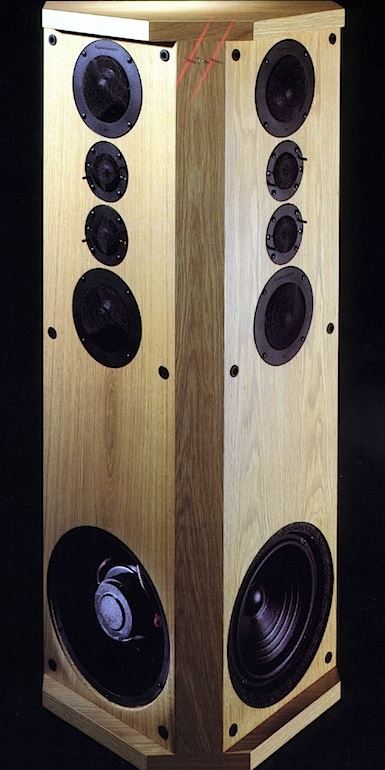
Each driver is working at 1/4 Power, so distorts less. The result is for the same SPL (Sound Pressure Level) in the room, the neighbours only hear half the loudness upstairs and downstairs.
I know this is true, because I have heard Party music from outside the building. The line-array Disco's caused far less annoyance to the neighbours than the regular MT styles.
Where this style scores is both midbass and tweeter have the same semi-cylindrical dispersion:

What that means is loudness falls off nearer inverse distance than inverse square. A gentler sound which shreds your ears less if you are close to the speakers. In fact in Concert Hall PA usage, it is common to use a a 4X 12" cabinet array of bass speakers. What is called a Bass Bin.
My theories about wiring details (in a common enclosure) are up to you to test. But nothing wrong with series wiring. Curt Campbell uses it, so did Roy Allison. Flat power BW3 or Flat Frequency response LR4 is another subject of interest.

I have a similar idea on the back burner using the Visaton WS17E-4 by my friend Lojzek:
Visaton-Monacor 2 way sealed simple loudspeaker build plans

Might make a decent MTTM.
@Draki. I don't think back EMF (Electro-Motive Force) is a useful concept. If you impedance correct a driver there is no back EMF whatsoever.
Where I am stumbling to with MTM, is MTTM might be better:
Each driver is working at 1/4 Power, so distorts less. The result is for the same SPL (Sound Pressure Level) in the room, the neighbours only hear half the loudness upstairs and downstairs.
I know this is true, because I have heard Party music from outside the building. The line-array Disco's caused far less annoyance to the neighbours than the regular MT styles.
Where this style scores is both midbass and tweeter have the same semi-cylindrical dispersion:
What that means is loudness falls off nearer inverse distance than inverse square. A gentler sound which shreds your ears less if you are close to the speakers. In fact in Concert Hall PA usage, it is common to use a a 4X 12" cabinet array of bass speakers. What is called a Bass Bin.
My theories about wiring details (in a common enclosure) are up to you to test. But nothing wrong with series wiring. Curt Campbell uses it, so did Roy Allison. Flat power BW3 or Flat Frequency response LR4 is another subject of interest.
I have a similar idea on the back burner using the Visaton WS17E-4 by my friend Lojzek:
Visaton-Monacor 2 way sealed simple loudspeaker build plans
Might make a decent MTTM.
Pleased to help, Draki. 😀
All is experimental of course. Jim, if this was my project, I'd try and fit a metal SEAS dome.... don't know the exact details of replacement voicecoils...

Sonics by Joachim Gerhard cabinets and kits.
Skip the ferrofluid. Makes things worse, IMO.
One of the better MTM designs was the Wharfedale E70:

Concentrated its efforts on the 300Hz to 3000Hz midrange. The sweet spot for vocals. Crossover was simple enough, largely on these lines:
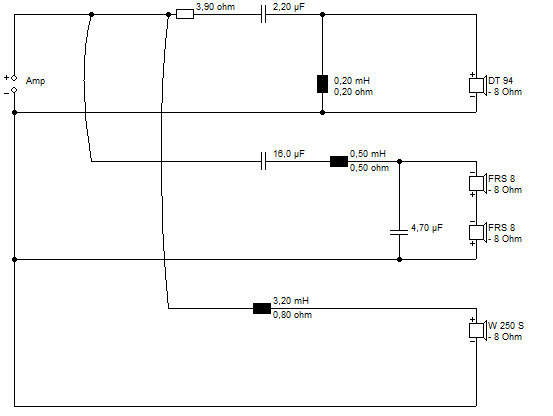
Depends how much you want to spend. But expensive Scan midbasses must justify some effort.
All is experimental of course. Jim, if this was my project, I'd try and fit a metal SEAS dome.... don't know the exact details of replacement voicecoils...

Sonics by Joachim Gerhard cabinets and kits.
Skip the ferrofluid. Makes things worse, IMO.
One of the better MTM designs was the Wharfedale E70:
Concentrated its efforts on the 300Hz to 3000Hz midrange. The sweet spot for vocals. Crossover was simple enough, largely on these lines:
Depends how much you want to spend. But expensive Scan midbasses must justify some effort.
I tend to prefer soft domes, and 27TDFCs are some of my favorites, so I'm looking forward to hearing these.
Tonight I put the drivers back in the cabs so I could start listening. They look nice next to my RBRs. 🙂

I still need to fool with positioning. Initial listening was with them not aimed properly, and the imaging was a bit washed out. So far they seem to be consistent with my original impressions: Forward, lean in the midrange. These 5" Revelators do have a lean lower midrange to begin with, but these seem even leaner than the RBRs. I think these were designed with minimal or no baffle step. I'll hook up a sub and see how they sound.

I still need to fool with positioning. Initial listening was with them not aimed properly, and the imaging was a bit washed out. So far they seem to be consistent with my original impressions: Forward, lean in the midrange. These 5" Revelators do have a lean lower midrange to begin with, but these seem even leaner than the RBRs. I think these were designed with minimal or no baffle step. I'll hook up a sub and see how they sound.
You could give them a little EQ. If you can get them similar to your other speakers it may be easier to hear the real differences.
I finally got Soundeasy set up and I took some measurements. I don't know how much I trust the data under 1k, but above 1k it seemed pretty repeatable. This indicates pretty poor tweeter matching, but interestingly, the flatter response is the tweeter that was pushed in. Once I get a little more fluent with Soundeasy I'll start testing the individual drivers.


- Home
- Loudspeakers
- Multi-Way
- Triad Silver Monitor rehab